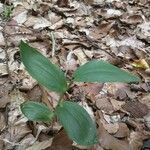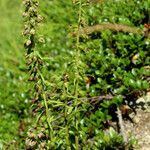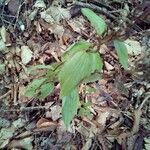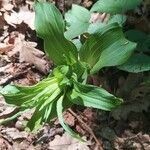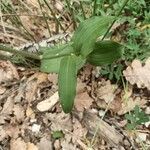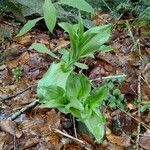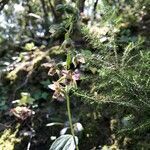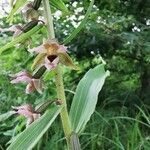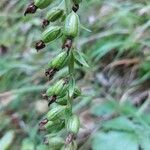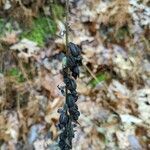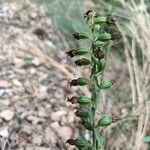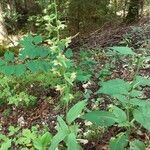Plants 25–80(–100) cm, sparsely to densely pubescent. Leaves 3–10, orbiculate, elliptic to narrowly lanceolate, 4–18 × 1.5–8.5 cm. Inflorescences racemes, loose to moderately dense, commonly 1-sided; floral bracts spreading, linear to narrowly lanceolate, 10–40(–70) mm, often exceeding flowers. Flowers 15–50, small; sepals greenish, often suffused with purple; lateral sepals 10–13 × 5–6 mm, apex oblique; petals ovate, pale green, pink, purple, or yellowish, 9–11 × 4–6 mm; lip indistinctly veined, constricted at middle into 2 parts, proximal part purplish to brownish, deeply concave, not papillose, 9–12 × 8 mm, distal part recurved, pink, broadly triangular-ovate, ± flat to tip, 5 × 5 mm; calli 2, near base, brownish, not rugose; column 3–6 mm; ovary glabrous. Capsules obovoid, 9–14 mm, glabrate to densely pubescent. 2n = 36, 38, 40, 44.
Erect from a short, praemorse rhizome, to 8 dm; lvs sessile and clasping, ovate to lanceolate, the lower to 10 cm, the upper progressively smaller; raceme 1–3 dm, many-fld, its bracts linear or narrowly lanceolate, the lower surpassing the fls; sep and lateral pet lance-ovate, 10–14 mm, acute, dull-green, strongly veined with purple; lip greenish and purple; 2n=36–44. Native of Europe, now widespread in our range along roadsides and in woods. July, Aug. (E. latifolia; Serapias h.)
